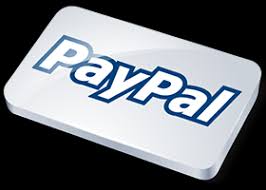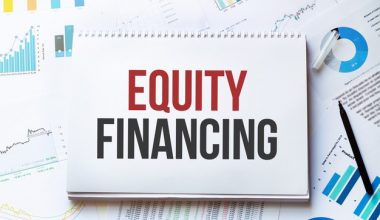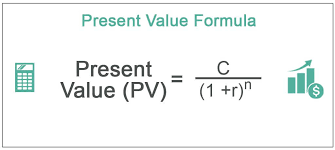Have you ever considered taking bridge loans but weren’t sure if it’s the right thing to do? Well, this bridge loan guide is everything you need right now. This is because, bridge loans are typically more expensive than conventional financing, to compensate for the additional risk. Bridge loans have different names in different countries. In the United Kingdom, it is called a “bridging loan,” “caveat loan,” and “swing loan.” In South Africa, it is known more as “bridging finance,” but is used in a more restricted sense than is common elsewhere. Regardless of its name, it is a short-term loan that you can take out pending the availability of long-term financing. As you read through this article, you’ll get to know all there is to know about bridge loans, their types, pros and cons, and lots more.
So, let’s start with the basics.
What is Bridge Loan?
A bridge loan is a short-term loan that is used until a person or company secures long-term or permanent financing.
It is a temporary loan (usually up to a year) that allows the individual to meet current/immediate needs by providing ready cash when funds are not available.
A bridge loan comes with relatively high-interest rates and must have some form of collateral, such as real estate property or business inventory. The loan is available to both individuals and companies. They are also called bridge financing or bridging loans.
More so, a bridge loan can be beneficial to homeowners as they can use it towards the purchase of a new home while they wait for their current home to sell. Like mortgages, home equity loans and HELOC bridge loans are secured by your current home as collateral.
It is important you know that bridge loans are not to be used as mortgage, but as short-term loans payable with six months to three years.
How Does a Bridge Loan Work?
Bridge loans can help homeowners purchase a new home while they wait for their current home to sell. Borrowers use the equity in their current home for the down payment on the purchase of a new home, while they wait for their current home to sell. Doing this gives the homeowner some extra time and peace of mind, while they wait.
More so, bridge loans vary widely in their terms, costs, and conditions. Some are structured so they pay off the old home’s first mortgage at the end of the bridge loan while others add the new debt on the old.
Borrowers may also encounter loans that have different interests. Some loans have monthly payments, while others require either upfront or end-of-the-term or lump-sum interest payments.
On the other hand, most bridge loans have general characteristics. They usually run for six-months and are secured by the borrower’s old home.
Some lenders exclude the bridge loan payment for qualifying purposes. The borrower is qualified to buy the move-up home by adding together the existing mortgage payment, if any, on their existing home to the new mortgage payment on the move-up home.
SEE ARTICLE: PRINCIPLES OF FINANCE
Bridge Loan for Home Owners
Many lenders qualify the buyer on two payments because most buyers have existing first mortgages on their present homes. The buyer will likely close on the move-up home purchase before selling an existing residence, so the buyer will own two homes, but hopefully only for a short time.
However, It is very rare for a lender to extend a bridge loan, unless the borrower agrees to finance the new home’s mortgage with the same institution.
Conversely, not all lenders have set guidelines for minimum FICO scores or debt-to-income ratios for bridge loans. Funding is guided by more of a “does it make sense?” underwriting approach.
The piece of the puzzle that requires guidelines is the long-term financing obtained on the new home.
Bridge loans can be costly to obtain. Closing costs are usually a few thousand bucks plus up to 2 percent of the loan’s original value, and they come with origination fees, before you close on your new home mortgage.
Here’s an example from Bankrate, let’s assume you obtain a bridge loan for $70,000, with your current home worth $100,000 and a $50,000 balance left on your mortgage.
Of that $70,000, $50,000 would go toward the mortgage, and another $2,000 would go to closing costs. Thanks to the bridge loan, you’d now have $18,000 for your next purchase — if all goes well with the sale of your current home.
Although most buyers get a bridge loan to cover finances involved in purchasing a new home and selling the old one, there’s hardly any protection for the borrower. Hence, a lender can decide to foreclose his old property after the bridge loan extension expired.
Due to this risk, it is important that you consider a bridge loan based on what you can afford and how quickly you can sell your old home.
Types of Bridge Loans
There are four main types of bridge loans, namely:
- Open bridging loan
- Closed bridging loan
- First charge bridging loan
- Second charge bridging loan
#1. Open bridging loan
An open bridging loan is one in which there is no fixed payoff date at initial inquiry. To ensure security of their funds, most bridging companies deduct the loan interest from the loan advance.
Borrowers who are unsure of the availability of their expected finance prefer the open bridging loan.
However, the downside to this is that, due to the uncertainty on loan repayment, lenders charge a higher interest rate.
RELATED ARTICLE: Personal Finance: Basics, Importance, Types, Management ( + Free Softwares)
#2. Closed bridging loan
In the closed bridging loan, a time frame for the repayment of the loan has already been predetermined. The two parties usually agree to this timeframe.
The lenders accept this type of loan because it gives them a greater degree of certainty about the loan repayment.
Additionally, it has a lower interest rate when compared to an open bridging loan.
#3. First charge bridging loan
In a first charge bridging loan, the loan gives the lender a first charge over the property.
In case of a default, the first charge bridge loan lender will receive its money first before other lenders.
Additionally, the loan has lower interest rates than the second charge bridging loans due to the low level or risks.
#4. Second charge bridging loan
For a second charge bridging loan, the lender takes the second charge after the existing first charge lender.
These loans are typically for a short period of time, 12 months, and carry a higher risk of default, hence a higher interest rate.
A second charge loan lender will only start recouping payment from the client after all liabilities related to the first charge bridging loan lender have been paid.
However, the bridging lender for a second charge loan has the same repossession rights as the first charge lender.
Who Offers a Bridge Loan?
You can get a bridge loan from many lenders, but you’d have to get one through your mortgage provider.
So, if you are in need of a bridge loan, speak to your lender. He will guide you on what the processes are like.
Alternatives to a Bridge Loan
If you need an alternative to a bridge loan, you may want to consider home equity loans. Just like bridge loans, home equity loans are secured loans using your current home as collateral, but that’s where it ends.
Home equity loans are long-term loans, and are repayable between five to twenty years. And has favorable interest rates, when compared to bridge loans.
Conversely, using a home equity loan to finance part of a new home purchase is risky. And if your home fails to sell, you may find yourself paying triple loans – your original mortgage, new mortgage, and home equity loan.
Hence, it is advisable to wait till your original home sells before requesting for a loan. But, if you have built enough equity in your current home, a home equity loan may be a better alternative to bridge loans.
How do I qualify for a bridge loan?
An great credit score is required for a real estate bridge loan. Low debt-to-income (DTI) ratios are also preferred by lenders.
What is bridge loan explain?
Short-term loans called “bridge loans” are used to cover the time between buying a new property and selling your old one. When you want to buy before you sell, you may not have the sale proceeds available to use as a down payment on a new house.
What are the cons of a bridge loan?
The disadvantages of a bridge loan often include a high interest rate, fees associated with transactions, and the unpredictability of the sale of the asset where the money is invested.
What are the risks of a bridge loan?
The main danger of a bridge loan may be that, if your house doesn’t sell by the time you have to start making payments, you’re still liable for the debt.
Why do people get bridge loans?
An equity-based bridge loan is a brief loan that you take out to pay for the down payment on a new house. A bridge loan can be helpful if you need additional funds to purchase a new house before selling your present one and want to make an offer without making it contingent on the sale of your current property first.
Is it worth getting a bridging loan?
Again, a bridging loan is the best option in this situation because it may be used to bridge the gap between buying a property and paying off the long-term mortgage. The bridge can be paid back using the usual mortgage once it has been finalized.
Does a bridge loan affect credit score?
Initially, you should be aware that commercial bridge loans, just like any other type of short-term debt, may cause a drop in your credit score during the loan’s term.
Bridge Loan Examples
Here’s an example of bridge loan, according to Investopedia
When Olayan America Corporation wanted to purchase the Sony Building in 2016, it took out a bridge loan from ING Capital.
The short-term loan was approved very quickly, allowing Olayan to seal the deal on the Sony Building with dispatch.
The loan helped to cover part of the cost of purchasing the building until Olayan America secured more-permanent, long-term funding.
Here’s another one
A mining company may secure $12 million in funding in order to develop a new mine which is expected to produce more profit than the loan amount.
A venture capital firm may provide the funding, but because of the risks the venture capital firm charges 20% per year and requires that the funds be paid back in one year.
These examples, give you a clearer illustration of what bridge loan entails and how it can be useful in personal and corporate affairs.
A Wikipedia Example
A property may be offered at a discount if the purchaser can complete quickly with the discount offsetting the costs of the short term bridging loan used to complete.
In auction property purchases where the purchaser has only 14–28 days to complete long-term lending such as a buy to let mortgage may not be viable in that time frame whereas a bridging loan would be.
READ ARTICLE: Cash out refinance loan explained (+ requirements and tools)
Bridge Loans in Corporate Finance
In corporate finance, bridge loans are used in venture capital for several purposes such as;
- As a final debt financing to carry the company through the immediate period before an initial public offering or an acquisition.
- To input small amounts of cash to sustain a company so that it does not run out of cash between successive major private equity financings.
- To sustain distressed companies while searching for a major investor.
Pros and Cons of Bridge Loans
In as much as bridge loans are known to save the day when there is a need for available cash flow, there are still some downsides to it.
Below are the pros and cons of bridge loans.
Pros of Bridge Loans
- It enables you secure opportunities you’d have missed because of a lack of available funds.
- With a bridge loan, you can pay a down-sized payment for a house while you await the sale of another.
- Qualifying and getting approved for a bridge loan takes less time than a traditional loan.
- Bridge loans allow for easy and flexible payment terms depending on the loan agreements.
- Most bridge loans are non-recourse. This means that the lender can only seek repayment of the loan through the property itself.
Cons of Bridge Loans
- With the flexibility of payments, comes a high-interest rate than traditional loans.
- Taking a bridge loan will leave you with the burden of paying double loans if the sale of your old house fails to go through.
- As a short-term financing option, bridge loans are costly due to association fees like lender legal fees, front-end charges, and valuation payments.
- Because you want to take a bridge loan, some lenders may insist that you must take a mortgage with them. This limits your ability to compare mortgage options across different firms.
READ ARTICLE: CORPORATE FINANCE: The Complete Guide (+ free courses)
Bridge Loans Vs. Traditional Loans
When compared to traditional loans, bridge loans have a faster application, approval and funding.
However, there’s a price to pay. For all of these convenience comes relatively short terms, high interest rates, nd large origination fees.
Generally, because borrowers are in dire need of these funds, they tend to accept these terms.
They are willing to pay high interest rates because they know the loan is short-term and plan to pay it off quickly with low-interest, and long-term financing plans.
More so, most bridge loans do not have repayment penalties.
Bottom Line
Getting a bridge loan may seem like a good idea if you buy a new home, and want to sell your old one, but it could be very risky for finances.
Regardless, bridge loans are better if you’re in a tight spot.
I hope this article helps you have a better understanding of bridge loans.
All the best!
PS: Don’t have a business plan yet? Or you’re still a bit confused about the idea of a business plan? Don’t worry, we got you! Click on the button below to have access to our list of workable business plans. These plans have helped a lot of business owners in over 10 countries of the world.





